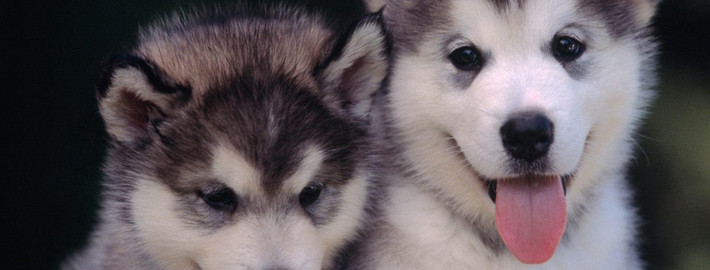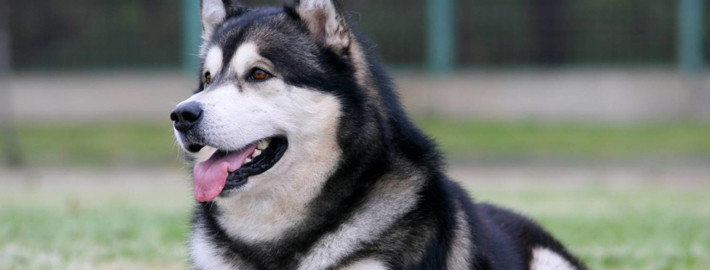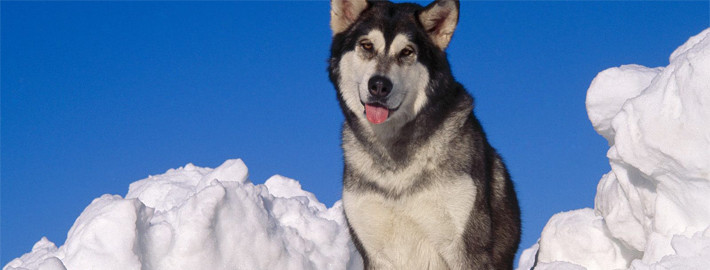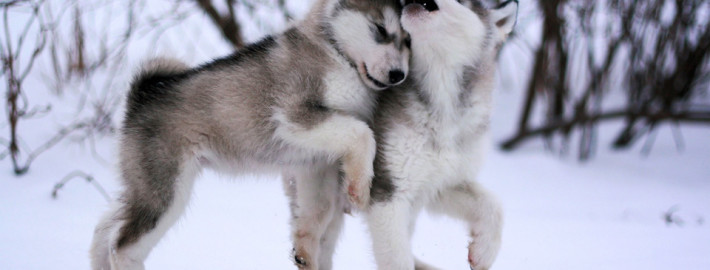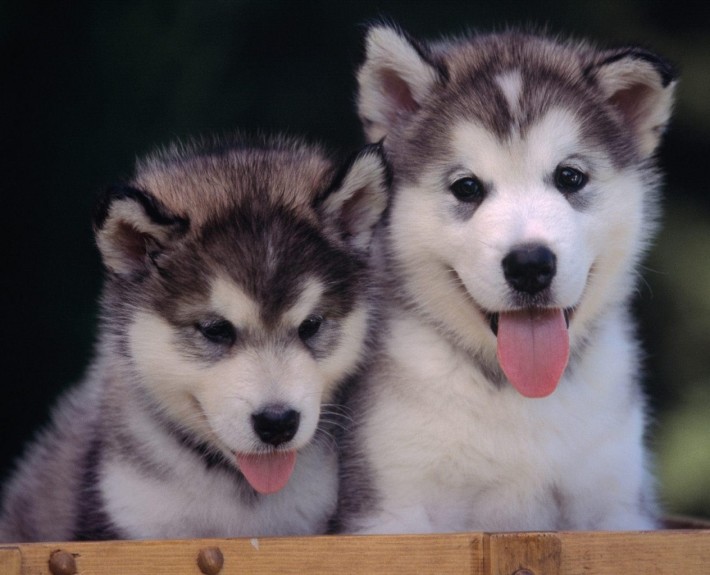What makes the Alaskan Malamute Unique?
The Alaskan Malamute is a generally large breed of domestic dog originally bred for use hauling heavy freight because of their strength and endurance, and later an Alaskan sled dog.
Breed Groups
Page Contents
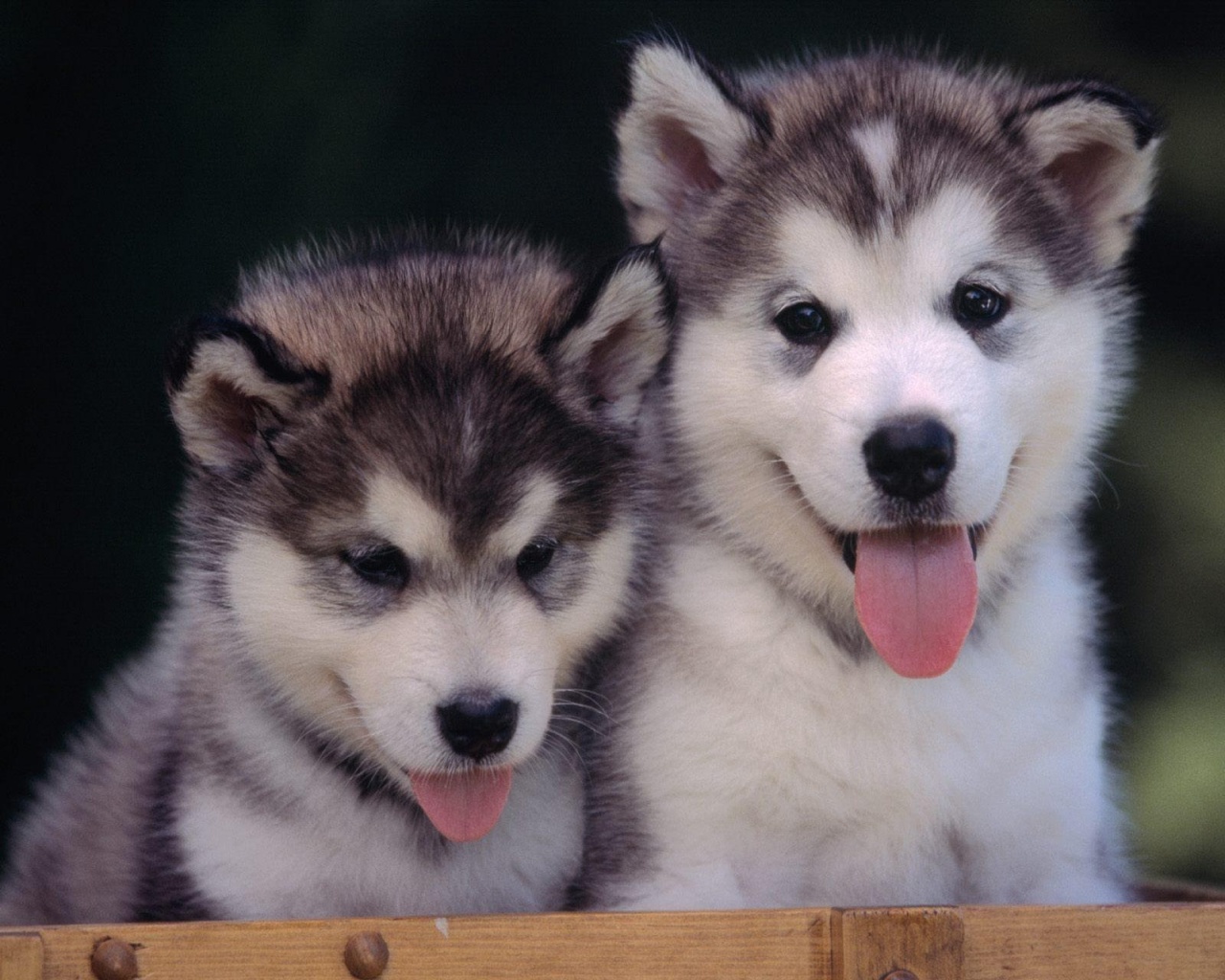
Is the Alaskan Malamute Right For You?
The Alaskan malamute is a powerfully built dog of Nordic breed type, developed to haul heavy loads rather than race. It is slightly longer than it is tall. It is heavy-boned and compact, designed for strength and endurance. Its gait is steady, balanced and tireless. Its coat is thick and double, with a coarse outer coat and dense, wooly, oily undercoat, providing the ultimate in insulation. Although its eyes have a “wolf-like” appearance, its expression is soft. The Alaskan malamute is powerful, independent, strong-willed and fun-loving. Its idea of great fun is to pull a sled or cart, but it also loves to run and roam. It is family-oriented, and as long as it is given daily exercise, it is well-mannered in the home. Without proper exercise, it can become frustrated and destructive. It is friendly and sociable toward people, but it may be aggressive toward strange dogs, pets or livestock. Some can be domineering. It tends to dig and howl.
In 5 Words
- Playful
- Devoted
- Loyal
- Friendly
- Diginified
Characteristics
Learn About the Alaskan Malamute
Description
The Alaskan Malamute is the largest of the Arctic dogs. This thick well built dog is solid with a plumed tail which is held over the back. The head is wide with erect ears. The eyes are of medium size, dark brown, small, and almond in shape and are obliquely placed in the skull. The dog holds an image of a wolf but with a proud, sweet expression. Dark eyes are preferred. Blue eyes are a fault according to the written standard. The feet are large, of the snowshoe type with tough pads. The thick, coarse double coat averages one to three inches in length and comes in a range of light gray to intermediate shadings of black, sable and shadings of sable to red. Combinations include, wolf gray, black & white, wolf sable (red undercoat with dark gray outer coat), or red. The only solid color allowed is white. The dog often has darker highlights and sometimes has a dark mask or cap. The legs and muzzle are almost always white. In some areas, dogs may be either smaller or larger than the official standard.
Short History of the Akita
When early white explorers arrived in the land eventually to be known as Alaska, they discovered an amazing breed of dog kept by the indigenous tribes. This dog no doubt evolved from the ancient dogs that accompanied prehistoric man in his migrations from Asia, across the Arctic to Greenland and back. The “Mahlemut” tribes around the Norton Sound area of Alaska kept this superior work dog who was less “wild”, more tractable, and capable of an enormous amount of work. These animals were used in hunting seals, coursing polar bear, hauling heavy sledges, and packing in supplies.
Europeans who began to explore the Arctic during the 18th century were drawn to this tough, hard-working dog. With the advent of the gold rush in Alaska during the late 19th century, the demand for the Alaskan Malamute – with its ability to pull people and equipment across the great, snowy landscape of Alaska – skyrocketed. The desire to not only mass produce the breed but also to make it faster and stronger led to a flurry of irresponsible breeding during his time, and by the 1920s the pure Malamute was nearly lost.
Temperament
The Alaskan Malamute is an affectionate, friendly dog, not a “one man” dog. He is a loyal, devoted companion, playful in invitation, but generally impressive by his dignity after maturity.
Caring for Your Alaskan Malamute
General Health
The average life span of the Alaskan Malamute is 10 to 12 years. Breed health concerns may include autoimmune hemolytic anemia, bloat, cancer, chondrodysplasia (dwarfism), diabetes, epilepsy, eye problems (refractory corneal ulceration, corneal dystrophy, glaucoma, cataracts, day blindness and generalized progressive retinal atrophy), hip dysplasia, hypothyroidism, and skin problems such as generalized demodicosis and follicular dysplasia. Malamutes also can have a genetic defect causing malabsorption of zinc, which leads to skin lesions despite adequate levels of zinc in their diet.
Grooming & Bathing
Daily: The Alaskan Malamute must be exercised daily to ensure it does not get bored. Fresh water and a well-balanced diet are also essential.
Weekly: This breed requires surprisingly little grooming, so a brush once or twice a week should suffice. Bathing is usually not necessary as their coat sheds dirt by itself.
Monthly: Like any other breed, the Alaskan Malamute should be treated for heartworm, ticks and fleas, and nails should be trimmed regularly.
Exercise & Training
Malamutes need a reasonable amount of exercise which include long daily walks. But be careful not to overdo it in warm weather.

